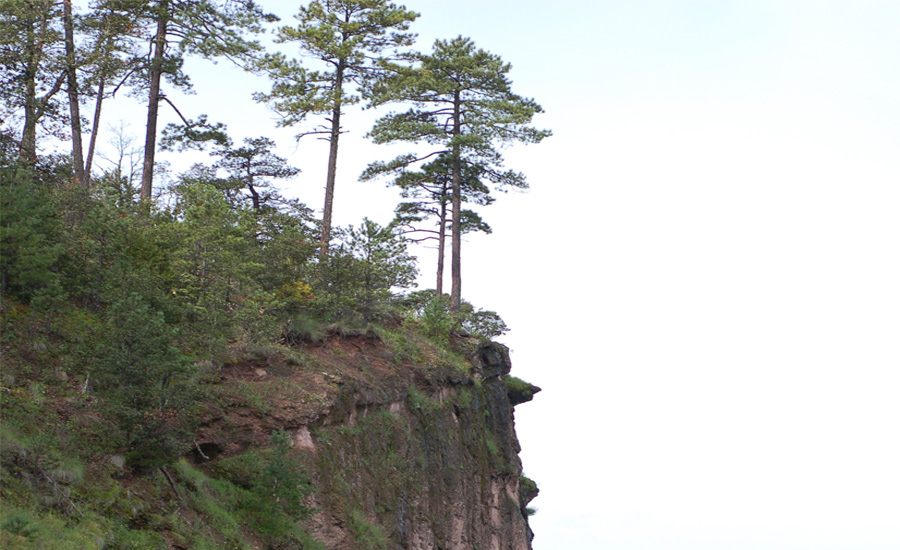
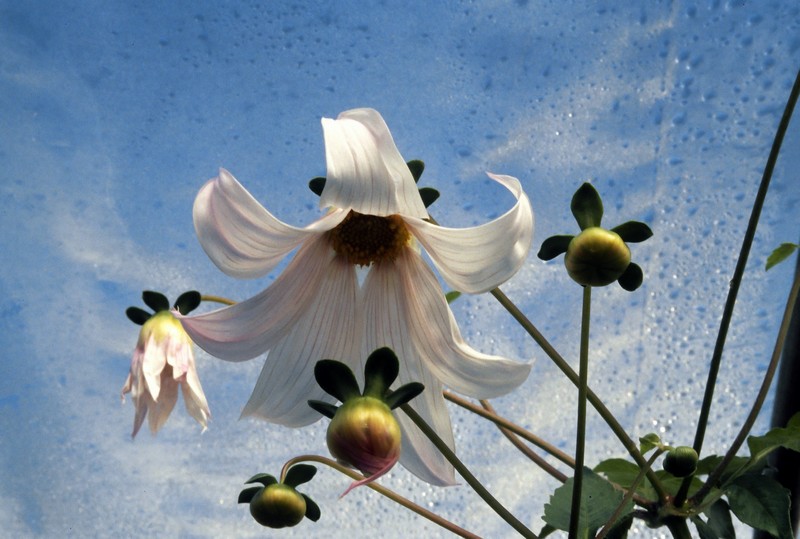 D. campanulata flower heads and buds growing under Quonset in northern Illinois (author’s research plot).
D. campanulata flower heads and buds growing under Quonset in northern Illinois (author’s research plot).Dahlia campanulat D.E. Saar, P.D. Sørensen, & Hjert. was named in 2003 (Saar et al., 2003a), based on two separate populations from the state of Oaxaca, Mexico. The type locality is SE of Huajuapan de Leon at an elevation of 1,950 meters (about 6,400 feet). Plants were growing from clay-filled crevices of rocky SSE-facing slopes and from soft clay fill below the highway. The plant zone included semi-arid deciduous scrub with a species of Ipomoea (probably I. wolcottiana ‒ a tropical tree in Convolvulaceae, the morning-glory family) and shrubby Solanaceae (nightshade/potato/tomato family). It might also occur in eastern Guerrero.
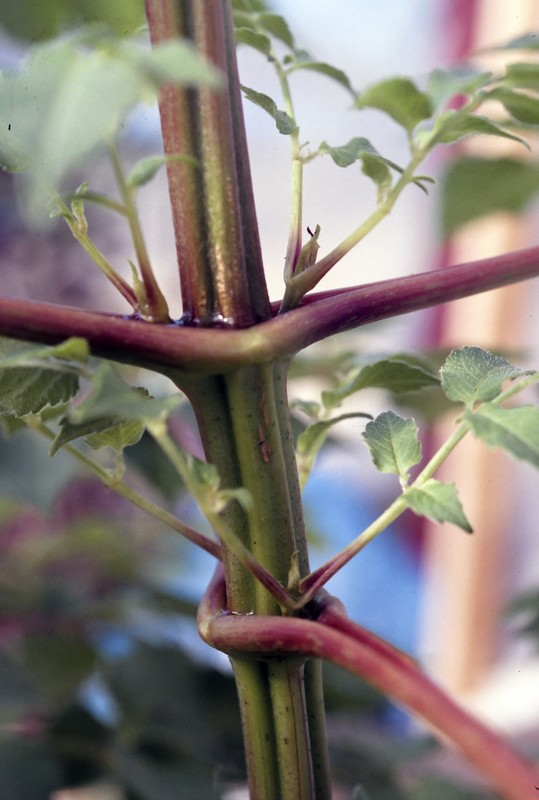 D. campanulata growing in research plot in northern Illinois showing grooved stem and enlarged petiole bases. These features also seen in wild plants.
D. campanulata growing in research plot in northern Illinois showing grooved stem and enlarged petiole bases. These features also seen in wild plants.
Plants are perennial, with four- or five-angled stems; internodes are solid. The compound leaves are up to 60 cm (23.6”) long, including the solid petioles. Flower heads are pendulous and up to 20 cm (7.9”) in diameter, which are some of the largest in the genus. Ligules area very light roseate pink, graduating to a slightly darker shade toward the center or base, with darker veins. Disc florets are yellow. The outer involucral bracts spread at right angles to the peduncle at anthesis. The tubers are enormous, exceeding 0.5 m (19.7”) in length (see figure).
The flowering period for D. campanulata does not begin until September, which is later than most species in the genus. When grown in gardens and greenhouses at more northerly latitudes, the longer spring days can delay flowering of this short-day plant for as much as 10 weeks (DES, personal observation).
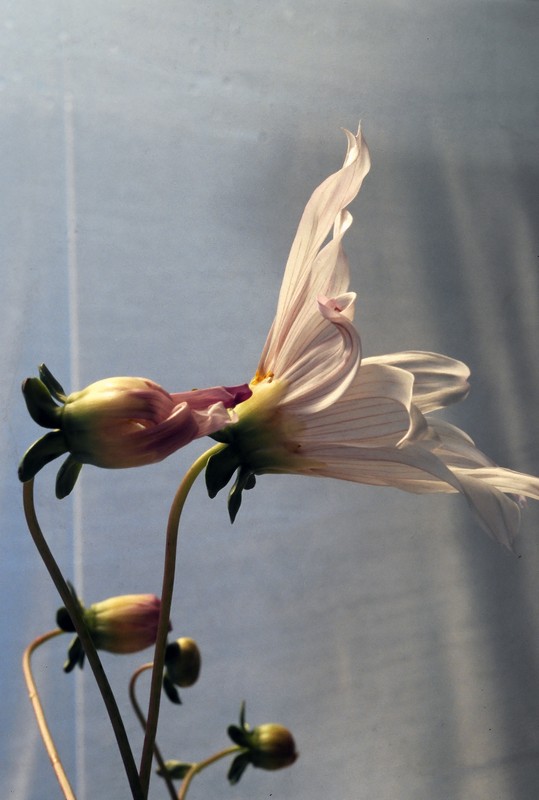 D. campanulata flower heads and buds growing under Quonset in northern Illinois.
D. campanulata flower heads and buds growing under Quonset in northern Illinois.
The specific epithet, campanulata, was chosen to draw attention to the unusual campanulate, or bell-shaped, flower heads (i.e., Bell-flowered Dahlia). All other species of Dahlia have a flatter, more daisy-like appearance. Unfortunately, it is sometimes called the Weeping Tree Dahlia (name origin unknown), which is very misleading. It is most definitely not a tree dahlia; the canes are annual, dying back to the ground each year, and plants only reach a height of 2.5 m (8.2’), but are frequently shorter in natural habitats. DNA sequences (Saar, 1999; Saar et al. 2003b) suggest that D. campanulata is related to the “tree dahlias” (D. excela, D. imperialis, and D. teniucaulis), but so are five other species (D. apiculata, D. australis, D. macdougallii, D. neglecta, and D. rudis,), most of which also have annual canes.
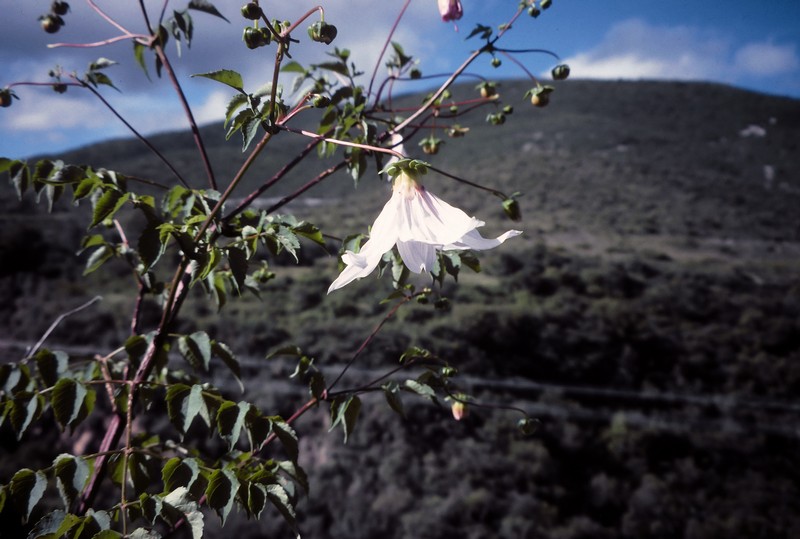 D. campanulata at type locality in Oaxaca.
D. campanulata at type locality in Oaxaca.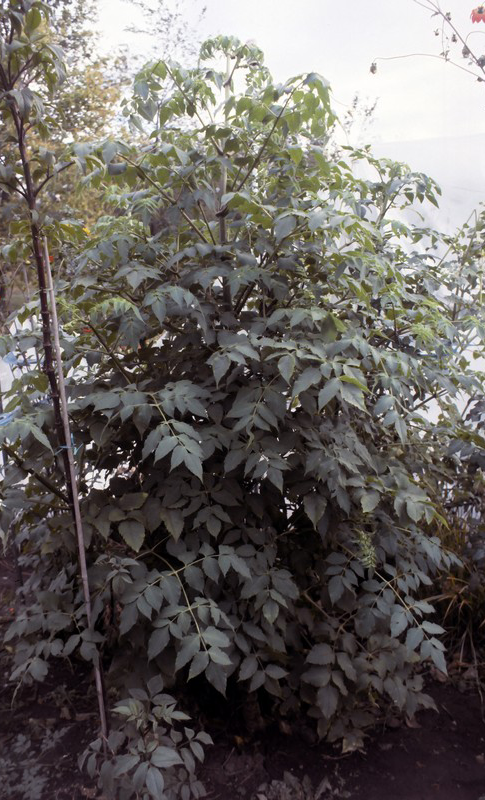
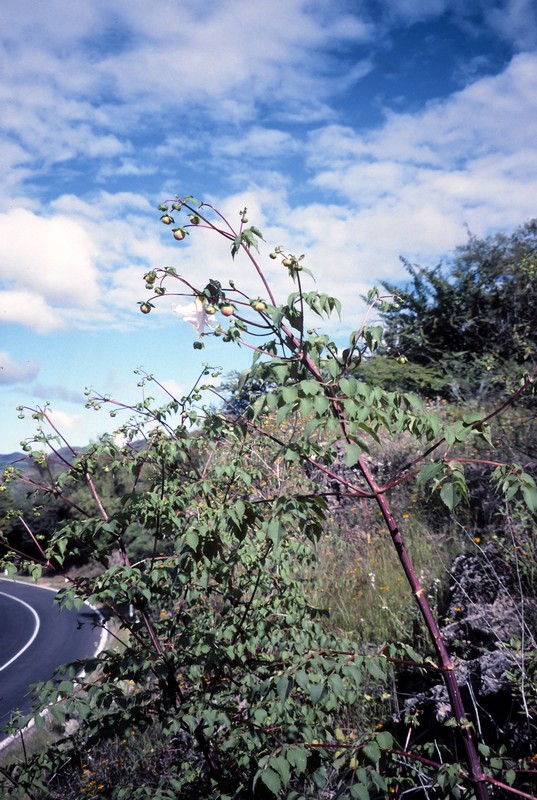
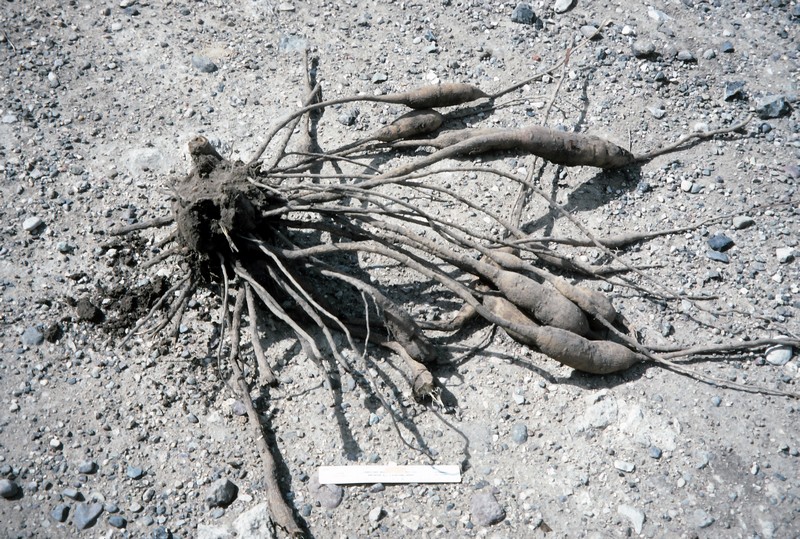 Tubers of D. campanulata at type locality. Approximately 2/3 of the tubers for this plant were removed. Ruler near bottom = 15 cm (6”).
Tubers of D. campanulata at type locality. Approximately 2/3 of the tubers for this plant were removed. Ruler near bottom = 15 cm (6”)..png)
.png)
.png)
.png)
References:
Saar, D. E. 1999. A phylogenetic analysis of the genus Dahlia (Asteraceae): an interdisciplinary study. Ph.D. dissertation, Department of Biological Sciences, Northern Illinois University, DeKalb, IL, USA, 266pp.
Saar, D.E., P.D. Sørensen, and J.P. Hjerting. 2003a. Dahlia campanulata and D. cuspidata: two new species from southern Mexico. Acta Botanica Mexicana 64:19-24. Saar, D.E., N.O. Polans, and P.D. Sørensen. 2003. A phylogenetic analysis of the genus Dahlia (Asteraceae) based on internal and external transcribed spacer regions of nuclear ribosomal DNA. Systematic Botany 28: 627-639.
Saar, D.E., N.O. Polans, and P.D. Sørensen. 2003b. A phylogenetic analysis of the genus Dahlia (Asteraceae) based on internal and external transcribed spacer regions of nuclear ribosomal DNA. Systematic Botany 28: 627-639.